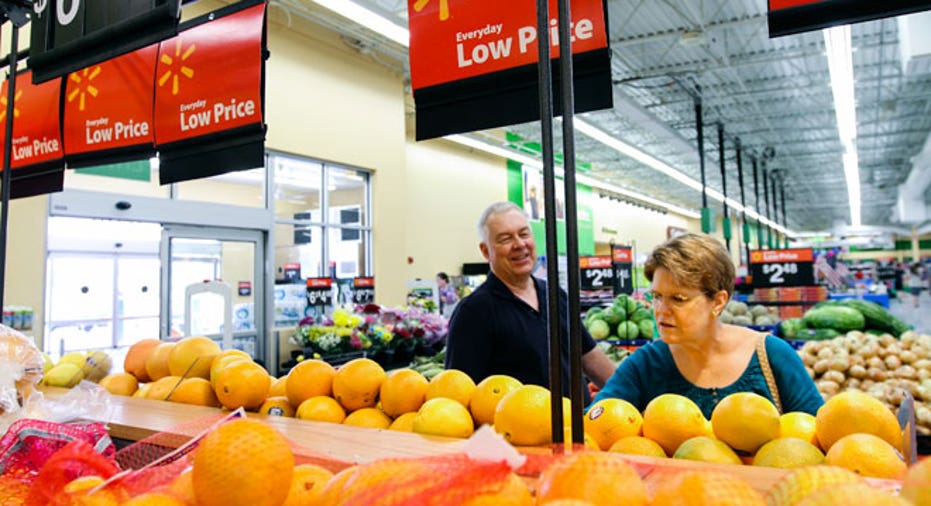How to Protect Your Budget from Rising Food Prices

With rising food prices, consumers need to be savvy shoppers in the grocery store to protect their wallets.
“Food costs are going up in the U.S. as a direct result of the drought,” says Suzanna de Baca, vice president of wealth strategies at Ameriprise Financial.
Consumers can expect the biggest rise in prices in beef and poultry. As of September, the consumer price index rose 5.4% for beef and 4.8% for poultry from last year, according to the Bureau of Labor Statistics.
“Cattle take a long time to raise,” says James Dunn, professor of agricultural economics at Pennsylvania State University. He explains that the drought hit the High Plains last year where cattle graze in Texas, Oklahoma, Colorado, Western Kansas and Wyoming. “Ranchers thinned out their herds because there was no grass,” says Dunn.
As the young animals grow, ranchers introduce corn for energy and soybeans for protein into their diets—droughts in the Midwest affected this year’s crops. “Back in July and August, grain prices shot up especially for corn, soybeans and items that go into feed for cattle,” says Steve Coker, co-manager and senior analyst at Frost Investment Advisors.
Since animal feed was so expensive, ranchers fed their cattle less and sold animals at lower weights. “It doesn’t take a lot for prices to move up,” says Dunn. “[Ranchers] were already losing money and marketing [cattle] at smaller weights—there’s less meat for the same number of animals.”
Chicken and turkey were also hit. “Poultry is a very efficient meat but still depends on a tremendous amount of corn,” says Dunn. Although farm fish also eat corn, Americans eat about 113.5 pounds of red meat, 66.5 pounds of poultry and only 15.2 pounds of fish and shellfish each year, according to the Department of Agriculture.
As American consumers become mindful of food costs, there are ways to plan menus in a way to manage your budget without making significant cutbacks in taste.
“The foods that are going to be affected are staples of American diets,” says de Baca. It doesn’t make sense to cut them out—you have to be a smarter shopper when purchasing those items.
Make a List and Stick to It
With a shopping list, you won’t be tempted to grab items off the shelves and throw them into the cart, says Clare Levison, certified public accountant and member of the AICPA’s National CPA Financial Literacy Commission. “Getting your kids involved in making the list could help them from asking you to buy items that aren’t on the list.”
Experts recommend planning your menu based on what’s on sale that week—don’t eat steak if chicken’s on sale. There are a variety of websites that offer low-cost meal ideas and recipes and alter recipes based on what you have on hand.
When buying meat and poultry, be picky with your cuts to reduce costs—prime rib will cost more than London broil.
Use Coupons and Discount Cards to Your Advantage
“You definitely want to get your grocery store discount card—they’re free and they offer discounts at particular stores,” says Levison. Shoppers are able to accrue points with some cards that can be used for other purchases like gas.
“Coupons are good but only for the things you need,” says Levison. It might be tempting to buy an item because it’s a good deal but if you don’t need it, don’t buy it.
Consider a Garden
“Consider growing your own garden—even if you’re planting tomatoes in pots,” says Levison. This can be particularly helpful with herbs, stores often increase herb and spice prices.
Stretch Out Your Meals
“We have flexibility in what we eat,” says Dunn. Eating more produce could save money—as of September, prices for fresh fruit dropped 1.1% and fresh vegetables dropped 4.9% from last year, according to the Bureau of Labor Statistics.
“You can adjust the proportion and use more of the more affordable stuff and less of the expensive foods,” says Dunn. When cooking foods like spaghetti, for example, use a little less hamburger and more onions to cut down on costs.
Try to make meals last for two dinners or take leftovers for lunch the next day, says Levison. Buying lunch can cost about $10 per day on average or $50 per week. “As much as possible, you want to eat at home because that’s where you’re going to get the most food for your money.”
Buy in Bulk
“Go to a big discount store for toilet paper, tissues, oils, sugars and baking products where you can buy in bulk,” says de Baca. “Similarly, you can buy generic foods for items that aren’t as important to you where it doesn’t make a difference.”
Although buying in bulk saves money, Levison suggests buying what can be used in a reasonable timeframe, like three months or less. “It’s a balance of the convenience of having food and cost savings but sometimes people leave food in the freezer for so long that it’s not appealing,” says Levison.
Since individual portions can be more expensive, consider buying a big bag of potato chips and divvying it out for the week instead, says Levison. “Avoid ‘gimmicky’ products like premade lunches which don’t have much in them but look fun and interesting. You can put that meal together on your own for a lot less money.”
Look for Specials When Eating Out
Restaurants are the quickest way to increase your food budget. “The best way to combat that is to save eating out for a special treat on a Friday or Saturday night,” says Levison. If you want to eat out, watch how much you spend on beverages and extras, since these can add up, and look for specials or kids eat free nights.